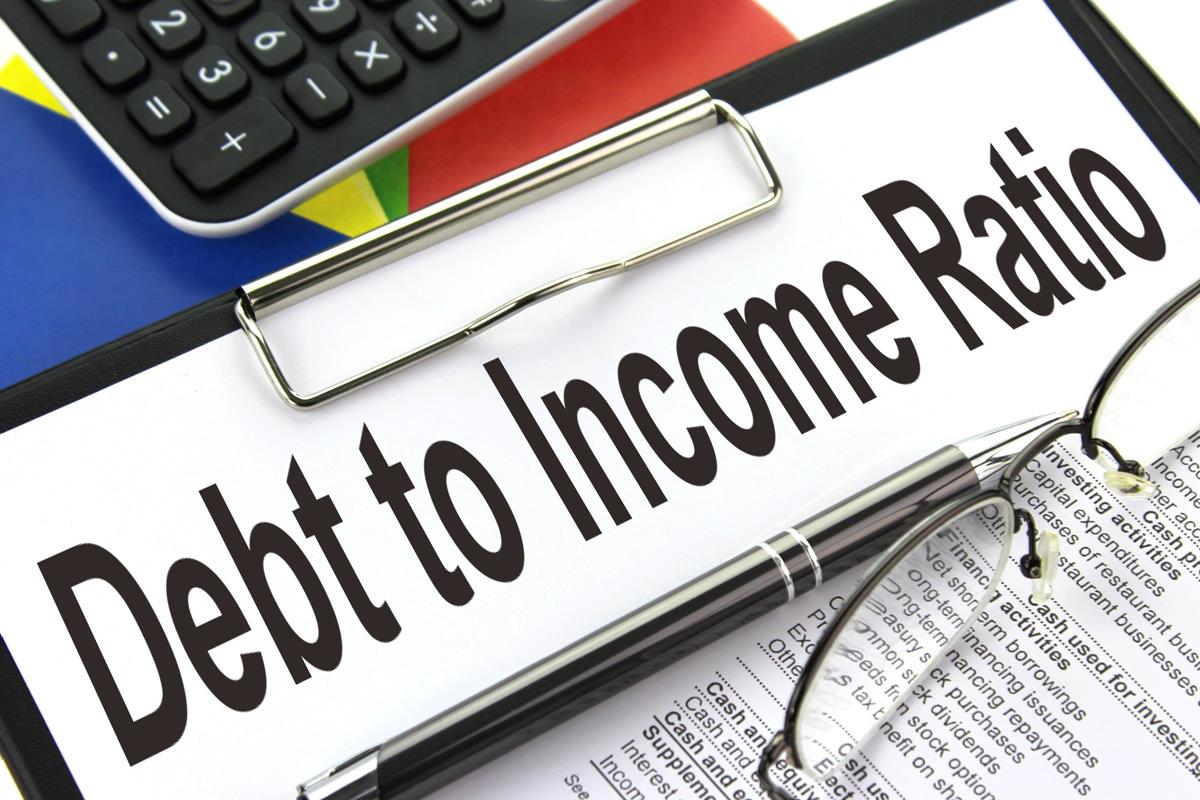
A Home Equity Line of Credit, or HELOC, stands as a powerful financial tool for homeowners looking to tap into their accumulated home equity. It offers a flexible way to access funds for significant expenses, such as home renovations, debt consolidation, or even covering educational costs. Much like a credit card, a HELOC provides a revolving line of credit that you can borrow from as needed, up to an approved limit, typically with lower interest rates than unsecured personal loans or credit cards.
However, the flexibility and apparent ease of access to funds that make HELOCs so appealing can also pave the way for common pitfalls and costly errors. Many homeowners, eager to leverage their home’s value, might overlook critical details or make assumptions that can lead to financial strain down the line. Understanding how a HELOC truly works, beyond just the allure of available cash, is paramount to using it wisely and avoiding potential traps.
In this comprehensive guide, we’ll break down twelve common mistakes people make when navigating the world of HELOCs. Our goal is to equip you with the knowledge needed to make informed decisions, ensuring your HELOC becomes a stepping stone to financial betterment rather than an unexpected burden. Let’s dive into the first half of these essential considerations, helping you sidestep the most frequent missteps and harness your home equity responsibly.

1. **Ignoring Variable Interest Rate Fluctuations**One of the most significant characteristics of most HELOCs is their variable interest rate structure. Unlike a fixed-rate loan where your interest rate remains constant throughout the loan term, a variable rate can, as its name suggests, fluctuate over time. This rate is typically tied to a benchmark index, most commonly the prime rate, which means changes in the broader economic landscape directly impact your monthly payments.
The prime rate itself often moves in direct response to actions taken by the Federal Reserve, particularly adjustments to the federal funds rate. When the Federal Reserve decides to raise the federal funds rate, the prime rate usually follows suit, leading to an increase in your HELOC’s interest rate. Conversely, a decrease in the federal funds rate can lead to lower HELOC rates, potentially reducing your monthly payments. However, the prevailing trend usually sees rates rising over time, which can catch borrowers off guard.
Failing to account for these potential fluctuations is a common and costly mistake. Many homeowners budget for their initial interest-only payments, which are often lower, without considering how a rising prime rate could significantly increase their future financial obligations. It’s crucial to understand that if the market conditions become unfavorable, your variable rate could climb, leading to substantially higher monthly payments than you initially anticipated. This makes it vital to assess your financial resilience to withstand such increases throughout the life of your loan.
Some lenders do offer a safeguard against this volatility: a fixed-rate conversion option. This allows borrowers to convert all or part of their HELOC balance into a fixed-rate loan, often during the draw period, to lock in a specific interest rate and avoid future rate hikes. Not exploring or understanding such an option, if available, could be a missed opportunity to stabilize your payments and protect your budget from unexpected market shifts. Always discuss these possibilities with your lender during the application process to see if they offer a suitable solution for your risk tolerance.
Read more about: The 11 Worst Depreciating Sedans: What Resale Charts Reveal for Savvy Investors

2. **Underestimating the Repayment Period Payment Spike**Understanding the distinct two-phase structure of a HELOC—the draw period and the repayment period—is absolutely critical, yet many borrowers underestimate the significant shift in payments that occurs between these two stages. The draw period, which typically spans 10 to 15 years, is when you can actively borrow funds from your line of credit as needed, up to your approved limit. During this phase, many lenders only require you to make interest payments on the amount you’ve borrowed, which keeps your initial monthly financial outlay relatively low and manageable.
This “interest-only” phase can create a false sense of affordability, as the monthly payments are often significantly lower than what will be required later. This can lead borrowers to become comfortable with a certain payment amount, inadvertently over-extending themselves without fully grasping the imminent change. While it’s possible to make payments towards your principal balance during the draw period, it’s not always required, meaning many homeowners defer the larger payments until the next phase.
The true challenge arises when your HELOC transitions into the repayment period, which usually lasts up to 20 years. Once this phase begins, you can no longer draw new funds. More importantly, your payments will now include both the principal and the interest on the entire outstanding balance. This fundamental change almost invariably leads to a substantial increase in your monthly payments, often catching unprepared borrowers off guard. The amount of this increase will depend on how much you borrowed during the draw period, your final interest rate, and the length of your repayment term.
This payment spike can put a considerable strain on household budgets, especially if your financial situation has changed or if you haven’t meticulously planned for this transition. Before the end of the draw period, it is strongly advised that a borrower “reevaluate their financial situation so they can make informed decisions about how to manage the repayment,” as Tom Hutchens, president of Angel Oak Mortgage Solutions, wisely states. Failing to do this can lead to scrambling for funds or even facing financial distress, highlighting why anticipating and planning for this shift is paramount to responsible HELOC management.

3. **Failing to Understand the Collateral Risk**One of the most fundamental yet frequently overlooked aspects of a HELOC is its nature as a secured loan. Like other mortgages, a HELOC uses your home as collateral. This crucial detail significantly reduces the lender’s risk, which in turn allows them to offer lower interest rates compared to unsecured financing options like credit cards or personal loans. However, this inherent benefit comes with a substantial caveat: if you cannot make your payments, you risk losing your home.
Many borrowers, focused on the immediate access to funds and the attractive interest rates, might not fully internalize the gravity of pledging their primary residence as security. The potential consequence of default is foreclosure, a scenario where the lender takes legal possession of your home to recover the outstanding debt. This is not merely a hypothetical risk but a very real outcome for those who fall behind on their HELOC obligations. It differentiates a HELOC dramatically from, say, a personal loan, where even if you default, your home is not directly on the line.
Understanding this collateral risk should heavily influence your borrowing decisions. It necessitates a rigorous assessment of your ability to comfortably manage the monthly payments, not just in the short term, but throughout both the variable draw period and the principal-plus-interest repayment period. It means having an emergency fund or a robust financial buffer to cover payments during unexpected financial setbacks, protecting your most valuable asset.
Ignoring or downplaying this risk is a common mistake that can have catastrophic consequences. Before committing to a HELOC, it’s imperative to ask yourself: “Am I truly confident in my long-term ability to repay this debt, even if my financial circumstances change or interest rates rise?” The answer to this question should be a clear and resounding ‘yes’ to ensure your home remains safe and sound, avoiding the ultimate downside of a HELOC.
Read more about: Hidden Costs: 15 Critical Reasons Why a Turbocharged Car Might Cost You More

4. **Over-borrowing or Using Funds for Unnecessary Spending**The allure of a revolving line of credit can be incredibly tempting. With a HELOC, you have access to funds on an as-needed basis, up to your approved credit limit, similar to how a credit card functions. This easy access to a significant sum of money can, unfortunately, lead to a common pitfall: unnecessary drawing and spending. The temptation to dip into your equity for discretionary purchases or expenses that don’t add lasting value can be strong, especially when the funds feel readily available.
While the flexibility of a HELOC means you *can* use the funds for any purpose you like, it doesn’t always mean you *should*. The context emphasizes that it’s typically best to use a HELOC to help pay for big projects or one-off purchases that align with a sound financial strategy. Using your HELOC for daily purchases, impulse buys, or non-essential luxuries effectively turns your home equity into an expensive ATM, especially since you’ll be paying interest on every dollar drawn.
Remember, you only pay interest on the amount you actually draw from your HELOC, but every dollar borrowed still needs to be repaid, along with that interest. Over-borrowing, even if not immediately needed, locks up your home equity and adds to your overall debt burden. It’s a mistake to treat a HELOC like an extension of your checking account for everyday whims, as this can deplete your home’s value without a corresponding increase in financial or personal assets.
Before drawing any funds, it’s crucial to have a clear, budgeted plan for how the money will be used. Aligning HELOC funds with projects that either increase your home’s value (like home improvements), consolidate high-interest debt, or provide a critical financial buffer (like an emergency fund) makes the most sense. Resisting the urge to overspend and being disciplined with your draws will prevent this powerful tool from becoming a detrimental liability, ensuring you leverage your equity for strategic, not superfluous, reasons.

5. **Not Diligently Comparing HELOC Lenders**In the financial world, assuming all lenders offer the same products or rates is a costly oversight, and this holds especially true for HELOCs. A significant mistake many prospective borrowers make is not taking the time to shop around and compare options from multiple HELOC lenders. The rates, fees, loan amounts, minimum credit score requirements, and specific terms can vary widely from one institution to another, and failing to explore these differences means you could easily miss out on the most advantageous deal for your situation.
For instance, the provided context showcases a range of lenders with distinct offerings. Connexus Credit Union is highlighted as “Best for low introductory rates,” offering APRs starting at 8.17% with a limited 3.99% introductory rate from Alliant Credit Union also. Citizens Bank, on the other hand, is lauded as “Best for fast closing,” sometimes as few as seven days, and waives closing costs. Fifth Third Bank stands out for its “rate-lock flexibility,” allowing customers to lock in rates on loan amounts for a $95 fee, a valuable feature in a volatile rate environment. Alliant Credit Union appeals with its “No application fees, appraisal fees or closing costs for HELOCS up to $250,000,” making it “Best for no fees.”
These examples clearly illustrate that what one lender excels at, another might not prioritize. A borrower focused solely on the lowest APR might overlook a lender with superior customer service, more flexible repayment terms, or the option to convert to a fixed rate down the line. Similarly, someone prioritizing quick access to funds might gravitate towards Citizens Bank, even if another lender offers a slightly lower ongoing rate. The point is, there’s no one-size-fits-all solution, and your specific needs should guide your comparison.
To avoid this mistake, you should actively solicit quotes and pre-approvals from a diverse set of lenders—banks, credit unions, and online providers. Pay close attention not only to the APRs but also to closing costs, annual fees, loan term lengths, draw and repayment periods, and any special discounts or perks, such as interest rate discounts for setting up autopay from an existing checking account. This diligent comparison shopping can lead to substantial savings and a HELOC that perfectly aligns with your financial goals and circumstances.

6. **Neglecting Your Credit Score and Debt-to-Income (DTI) Ratio**When applying for any form of credit, your personal financial health is under scrutiny, and a HELOC is no exception. A critical mistake many prospective borrowers make is neglecting to optimize their credit score and debt-to-income (DTI) ratio before applying. These two factors play a profoundly significant role in determining not only whether you qualify for a HELOC but also the interest rate and terms you’ll ultimately be offered. A higher credit score generally signals less risk to lenders, which translates into better rates and more favorable loan terms.
Your credit score, often a three-digit FICO® score, is a reflection of your past credit management, including your payment history, amounts owed, length of credit history, new credit, and credit mix. Lenders use this score to gauge your reliability as a borrower. If your credit score is on the lower side, you’re likely to be offered a higher interest rate, increasing the overall cost of your HELOC. Therefore, taking proactive steps to build your credit—such as making all payments on time, reducing outstanding debt, and avoiding new credit inquiries—can significantly improve your HELOC prospects and secure a lower rate.
The debt-to-income (DTI) ratio is another crucial metric that lenders meticulously examine. This ratio compares your total monthly debt payments to your gross monthly income. A high DTI indicates that a large portion of your income is already committed to existing debt, which can make lenders hesitant to approve additional credit or cause them to offer less competitive rates. Lenders want to ensure you have enough disposable income to comfortably manage new HELOC payments alongside your current financial obligations.
To improve your DTI ratio and make yourself a more attractive borrower, consider paying down existing debts or, if possible, increasing your income. Even small reductions in your monthly debt obligations can positively impact this ratio, prompting lenders to offer you better rates. Avoiding these common mistakes by actively working to enhance your credit score and DTI ratio before application can be the difference between a burdensome HELOC and one that serves as a truly beneficial financial asset, underscoring the importance of sound financial preparation.

7. **Neglecting to Plan for the Repayment Period**One often underestimated yet crucial mistake in HELOC management is the outright neglect of proactive financial planning for the repayment period. While many borrowers comfortably navigate the initial draw period, accustomed to making only interest payments, they fail to adequately prepare for the significant and often abrupt shift that occurs when principal repayment begins. This oversight can lead to severe financial strain, catching homeowners completely unprepared for higher monthly obligations.
The draw period, which typically spans 10 to 15 years, allows homeowners to access funds as needed, often with the option to make interest-only payments. This convenient phase can, unfortunately, create a deceptive sense of affordability, making it easy to become complacent with the current financial outlay. However, once this period concludes, the HELOC transitions into the repayment phase, where new draws are no longer permitted, and payments invariably increase to include both principal and interest on the entire outstanding balance.
As Tom Hutchens, president of Angel Oak Mortgage Solutions, wisely states, “Before the end of the draw period, a borrower should reevaluate their financial situation so they can make informed decisions about how to manage the repayment.” Failing to heed this expert advice means neglecting to create a revised budget, explore potential refinancing options, or consider strategies to pay down the principal balance before the repayment period commences. This lack of foresight can swiftly transform a flexible financial tool into an unmanageable burden when the higher payments inevitably come due.
Proactive planning involves recognizing that your financial situation and market conditions can evolve significantly over a decade or more. It necessitates regularly reviewing your HELOC balance, understanding the precise date of your repayment period transition, and formulating a clear strategy for managing the increased payments. Whether it’s setting aside additional funds, aggressively paying down the principal during the draw period, or exploring a fixed-rate conversion option, an informed and forward-looking approach is paramount to avoid being blindsided by dramatically higher monthly expenses.

8. **Misusing HELOC Funds for Recurring Daily Expenses**The inherent flexibility of a HELOC, granting access to funds on an as-needed basis, is undoubtedly a major draw. Yet, this very convenience can become a pitfall if misused. A common and potentially damaging mistake is to treat your HELOC as an extension of your checking account, drawing funds for recurring daily expenses like groceries, entertainment, or other routine, non-essential expenditures. This pattern can rapidly deplete your home’s equity without any corresponding long-term financial benefit.
The context explicitly cautions against this, noting, “Unlike your credit card, you shouldn’t borrow against your HELOC for daily purchases.” Using a HELOC for such transient purposes effectively converts your valuable home equity into an expensive cash flow solution for everyday needs. While you typically only pay interest on the amount you draw, every dollar borrowed from your HELOC, regardless of its use, adds to your principal balance and must eventually be repaid with interest, all while your home remains pledged as collateral.
This habit of drawing for daily necessities signifies a fundamental misunderstanding of the HELOC’s strategic purpose and can often mask underlying budgeting shortfalls. Instead of addressing the root cause of deficits in daily spending, relying on a HELOC for these expenses can create a cyclical debt trap. Your home equity dwindles, your overall debt burden grows, and your financial risk increases, all without contributing to a lasting asset or resolving deeper financial challenges.
To effectively avoid this common mistake, it is crucial to align your HELOC usage strictly with its intended strategic benefits. Prioritize deploying funds for major home improvements that genuinely enhance your property’s value, for consolidating high-interest debt into a more affordable product, or for establishing a robust emergency fund. These represent strategic investments in your financial future, ensuring you leverage your equity for purposeful growth rather than simply covering the cost of daily living, which should ideally be managed through disciplined budgeting of your regular income.

9. **Misunderstanding HELOC Tax Deductibility Rules**The prospect of tax deductions on interest paid is a compelling feature that attracts many homeowners to HELOCs. However, a significant mistake is misunderstanding the precise rules and limitations governing this benefit. Erroneously assuming that all interest paid on a HELOC is tax-deductible, irrespective of how the funds are utilized, can lead to incorrect tax filings and missed opportunities for legitimate savings. The reality is considerably more nuanced, as tax deductibility is directly tied to the specific purpose of the borrowed funds.
According to the IRS, you can generally only deduct interest on mortgage debt that you use “to buy, build or substantially improve a home.” This rule applies to HELOC debt incurred on or after December 16, 2017, and is subject to a combined mortgage debt limit of up to $750,000. This means that if you strategically deploy your HELOC funds for home improvement projects that genuinely increase your home’s value—such as kitchen remodels, bathroom updates, or a master bedroom addition—the interest payments are typically deductible.
Conversely, if your HELOC funds are used for other purposes, such as consolidating credit card debt, funding college tuition, or establishing an emergency fund, the interest paid on those specific draws is generally *not* tax-deductible. While using a HELOC for debt consolidation might offer financial advantages due to lower interest rates compared to high-interest credit cards, it’s a critical detail that the interest deduction benefit will not apply to that portion of the interest, a point often overlooked by borrowers.
To maximize any potential tax benefits and scrupulously avoid costly missteps, it is absolutely essential to consult a qualified tax advisor before making any assumptions about deductibility. A tax professional can provide personalized guidance based on your unique financial situation, how you plan to utilize the HELOC funds, and the most current tax laws. Understanding these intricate regulations ensures you accurately account for your interest deductions and leverage the HELOC’s benefits responsibly, transforming it into a truly smart financial move rather than a source of tax confusion.

10. **Failing to Explore Suitable Alternatives**In the journey to tap into home equity, a prevalent mistake is to become fixated solely on a HELOC without thoroughly investigating other available financial alternatives. While a HELOC certainly offers distinctive advantages, it is by no means a one-size-fits-all solution for every financial need or borrower profile. Neglecting to consider options such as a home equity loan, a cash-out refinance, a personal loan, or even a credit card for smaller expenses can lead to selecting a product that is suboptimal or, in some cases, even detrimental to your long-term financial objectives.
For instance, a **home equity loan** presents a significant distinction from a HELOC. With a home equity loan, you receive your money as a single, upfront lump sum, and you subsequently repay it with regular, fixed monthly payments over a predetermined term. This structure provides predictable payments, making it an ideal choice for a one-time, large expense where the exact amount needed is known, such as a major home renovation. Crucially, unlike a variable-rate HELOC, a fixed-rate home equity loan offers payment stability and protection against potential interest rate hikes, thereby eliminating payment uncertainty throughout its life.
Another powerful alternative to consider is a **cash-out refinance**. This process involves replacing your existing primary mortgage with a new, larger mortgage, and you receive the difference between the new loan amount and your existing balance in cash. A key benefit here is the consolidation of everything into a single mortgage payment, which can simplify your household finances considerably. However, it’s important to recognize that this entails refinancing your entire primary mortgage, which might restart your loan term and could potentially lead to higher overall interest payments if the new loan’s duration is significantly extended.
For smaller, or even recurring, expenses that don’t warrant leveraging your home equity, a **personal loan** or a **credit card** might prove more appropriate. A personal loan, while typically carrying higher interest rates than a HELOC due to its unsecured nature (meaning your home is not used as collateral), offers significant flexibility and completely removes any direct risk to your primary residence. Credit cards, on the other hand, are generally best reserved for very small, short-term needs that can be paid off quickly to avoid their typically high interest rates. Each of these alternatives comes with its own distinct set of pros and cons, and a financially prudent borrower takes the time to thoroughly understand them all before committing to a HELOC.
Read more about: Why American Drivers Are Shifting Away From Sedans: An In-Depth Analysis of Market Dynamics and Consumer Preferences

11. **Overlooking Lender-Specific Requirements and Details**Beyond the initial comparison of interest rates and general fees, a critical mistake many borrowers make is failing to delve into the granular, lender-specific requirements and operational nuances that can profoundly impact their HELOC experience. Each financial institution structures its HELOC offerings with unique eligibility criteria, specific loan terms, and distinct operational particulars that, if overlooked, can create unexpected hurdles, additional costs, or even render you ineligible. This essential due diligence extends far beyond merely scrutinizing APRs.
Consider the diverse features highlighted in the context information: Connexus Credit Union, for instance, is recognized as “Best for low introductory rates” but explicitly states that applicants “Must be a member of the credit union to accept a loan (but can apply without membership)” and notes that “Investment properties not eligible.” Citizens Bank proudly offers “fast closing” and waives “No application fee or closing costs,” yet it imposes a “$50 annual fee” after the first year unless the borrower maintains another active Citizens account. These are not minor stipulations; they represent fundamental aspects that directly influence who qualifies, what you ultimately pay, and how you manage the loan throughout its life.
Fifth Third Bank distinguishes itself with “rate-lock flexibility,” allowing customers to lock in a rate on any loan amount for a $95 fee, up to three times—a particularly valuable feature in an environment of fluctuating interest rates. Alliant Credit Union, lauded as “Best for no fees,” explicitly states no application, appraisal, or closing costs for HELOCs up to $250,000, but also specifies a higher minimum loan amount ($25,001) for residents of Wisconsin and Washington, D.C. These highly specific perks and conditions are integral components of the overall value proposition and must be meticulously evaluated against your individual needs and anticipated borrowing patterns.
Understanding these lender-specific caveats can translate into significant savings and prevent considerable frustration down the line. It means proactively inquiring about membership requirements, potential annual fees, specific property type restrictions, minimum or maximum loan amounts, the availability and associated costs of fixed-rate conversion options, and any interest rate discounts (such as those offered for setting up autopay from an existing checking account). Such thorough investigation ensures you select a HELOC that not only offers competitive rates but also aligns seamlessly with your financial profile and how you genuinely intend to utilize this powerful line of credit.

12. **Ignoring State Availability and Regional Restrictions**An often overlooked, yet absolutely crucial, mistake when exploring HELOC options is failing to verify a lender’s service availability in your specific state or region. The landscape of financial products is heavily regulated, and many lenders, particularly smaller credit unions or regional banks, simply do not offer their HELOC products nationwide. Assuming a lender prominently advertised will serve you, only to discover they do not operate in your geographic area, can prove to be a frustrating and time-consuming setback in your borrowing journey.
The provided context clearly illustrates these geographical limitations across several prominent lenders. For example, Connexus HELOCs “are available in most states except Alaska, Hawaii, Maryland and Texas.” If your primary residence is located in one of these excluded states, Connexus is simply not an option for you, regardless of how appealing their low introductory rates or other features might seem. Similarly, Citizens Bank’s HELOC “is only available in Connecticut, Delaware, Florida, Illinois, Indiana, Kentucky, Maine, Maryland, Massachusetts, Michigan, New Hampshire, New Jersey, New York, Ohio, Pennsylvania, Rhode Island, Vermont, Virginia and Washington, D.C.,” underscoring its regional focus.
Fifth Third Bank further demonstrates this pervasive issue, with its HELOC loans being offered “in only 11 states: Florida, Georgia, Illinois, Indiana, Kentucky, Michigan, North Carolina, Ohio, South Carolina, Tennessee and West Virginia.” Even Alliant Credit Union, despite its broader appeal, explicitly states that its HELOCs are available “in only 25 states and Washington, D.C.” These concrete examples emphasize that geographical restrictions are not mere exceptions but rather common aspects of the HELOC market that prospective borrowers must actively investigate from the outset.
Before you invest significant time comparing rates, meticulously gathering documents, and diligently filling out applications, make it an absolute priority to confirm that your chosen lender legally operates in the state where your property is situated. A quick check of their official website or a direct phone call to their customer service department can save you considerable wasted effort and potential delays. Overlooking this fundamental step can lead to unnecessary frustration, highlighting why understanding state availability is as vital as scrutinizing interest rates and loan terms in your comprehensive HELOC decision-making process.
**The Bottom Line**
Read more about: Navigating the Shifting Sands: Why 9 Beloved Fast-Casual Chains Are Facing Customer Dissatisfaction and What It Means for the Industry’s Future
Navigating the world of Home Equity Lines of Credit can be a fantastic way to unlock your home’s potential and achieve significant financial goals, but it’s a journey best undertaken with a solid foundation of caution and comprehensive knowledge. From meticulously understanding the nuances of variable rates and proactively planning for future payment spikes to diligently comparing lenders and being acutely aware of tax implications, each step in the HELOC process demands informed decision-making. By consciously sidestepping these common pitfalls, you can transform your HELOC into a powerful, strategic financial ally, truly leveraging your home equity to build a more secure and prosperous future. Remember, your home is one of your most valuable assets; manage its equity wisely, and it will serve you well for years to come.



